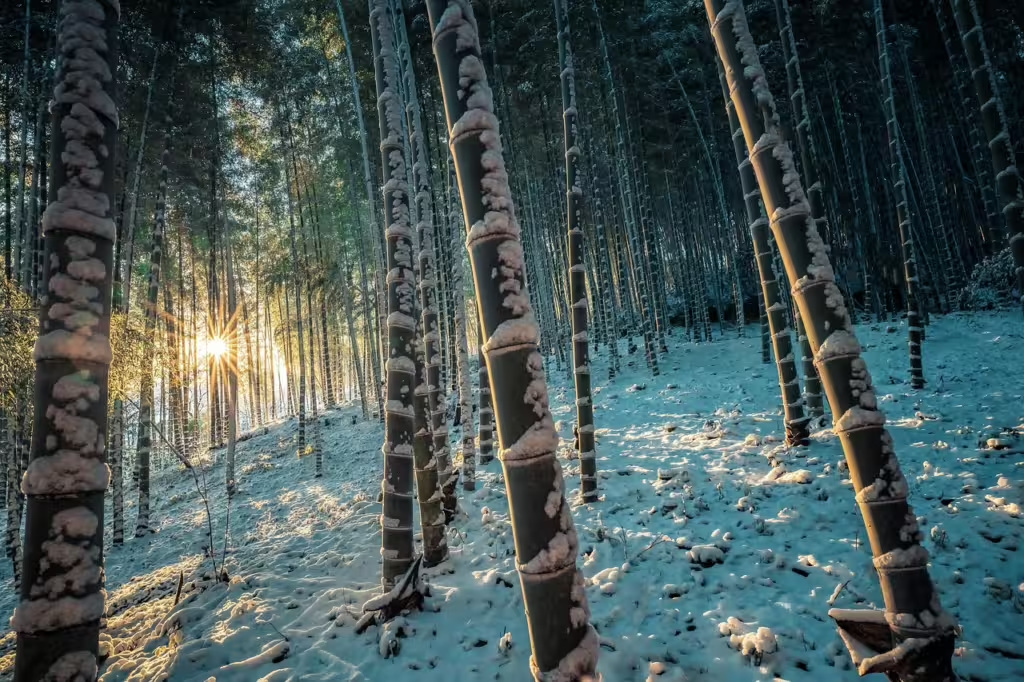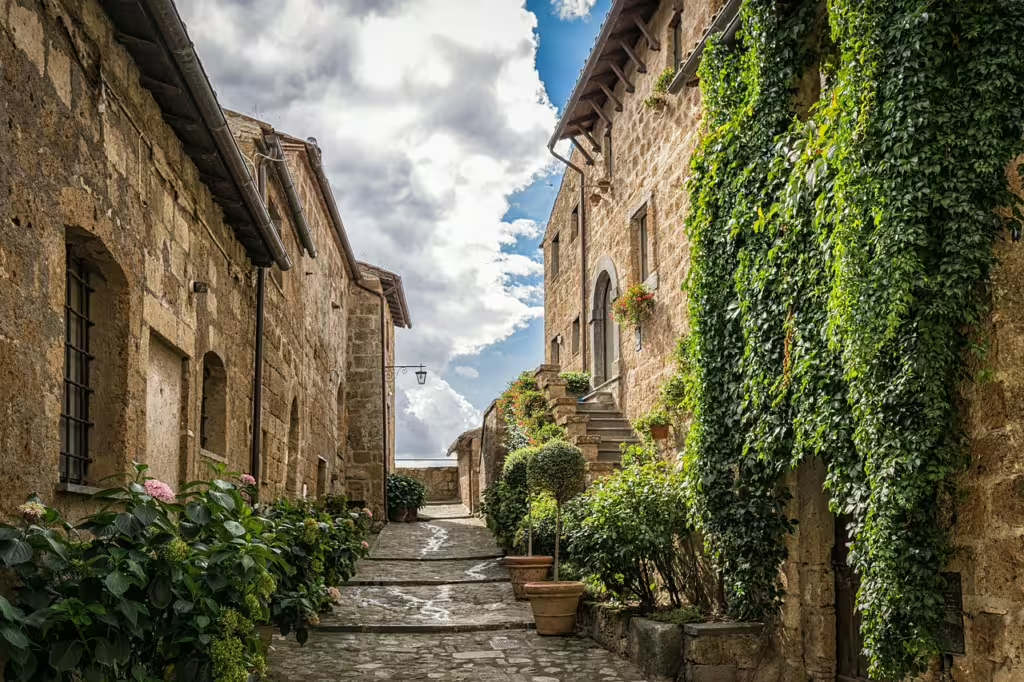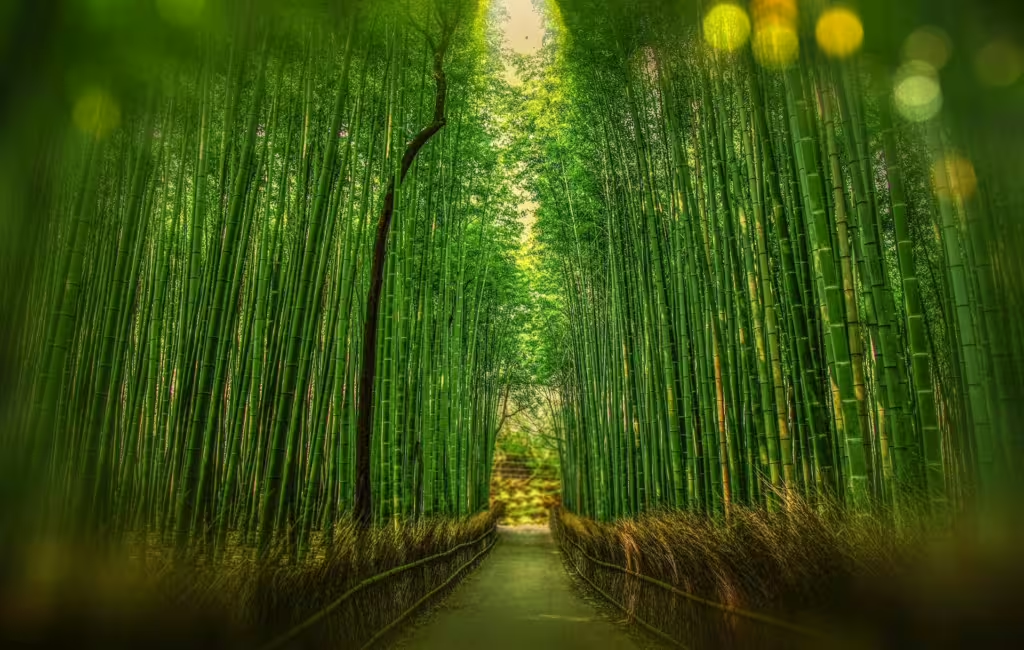Folks who spend their days “watching the grass grow” are either the types of patient individuals who can weather the slow passage of time, of they’re just plain bored. Either way, the idiom itself represents the idea that the vast majority of plant life on this planet takes weeks, months, or even years to show any sort of noticeable growth. Trees form rings over the centuries, flowers unfurl only in their time; basically, the whole narrative behind plants is that they are slow and steady. Of course, there are outliers.
That’s right, some species of plants don;t just grow quickly, they do so at an unbelievable pace, reaching new heights in the space of a single day, in some cases. It is in these few botanical outliers that we aim to discover the true exceptions to the rule of plant growth. The most famous and recognizable of those speedy growers are bamboo and its transplanted American cousin, the kudzu.
In this article, we will travel to the ends of the Earth to find the worlds fastest-growing plants. As we explore, we will explain how speed can be an evolutionary tool and in many cases, the ultimate weapon of plant survival. At the same time, we shall examine the science behind this unusually rapid growth and the ecological implications of such botanical rapidity.
Why Speed Matters in the Plant World
Outcompeting Neighbors
Despite their relatively placid, wholly immobile natures, plants are actually quite competitive; biologically-speaking. They compete for sunlight, water, and nutrients, usually against other plants, but occasionally against animals and the likes of us. As a result, plants find all sorts of ways to outcompete against their neighbors. They grow taller or shorter, specialize their reproductive process, or even grow on top of other plants. And while all of these are effective, speed is one of the best ways that a plant can literally outpace its competitors.
Another bonus that rapid growth enables is the ability for plants to spread and establish themselves in disturbed or open areas. This means that plants that grow the fastest are often the most effective pioneers following natural disasters, logging, strip-mining, or fires. Grasses and other plants, such as those that are most often harvested by humans, also happen to be fairly quick when it comes to replenishing themselves. We mention grasses here because they tend to be consistently grazed on by herbivores; and most have evolved the ability rebound almost immediately after being cut down.
We touched on it in terms of plants we utilized for food, but there are other plants that people use in the course of their lives for more than just eating. Some fast-growing plants, such as bamboo, can be used as a renewable building material.

Bamboo: Ever-Growing Upwards
We ended the last section on bamboo for a very good reason. This Asian grass—yes, bamboo is a type of grass—has near-legendary status thanks to its incredible rate of growth. For example, certain species, such as Moso bamboo, can grow up to 35 inches in a single day under optimal conditions. That works out to nearly 1.5 inches per hour! That is so fast that observers have physically witnessed the new growth in the space of a single afternoon!
The Explanation
So, how does bamboo grow so dang fast? The secret lies in the fact that bamboo belongs to the grass family (Poaceae). Grasses, unlike trees, has shoots that emerge from underground rhizomes as fully formed stalks. This is unlike trees, which add new growth through cambium layers year after year. Meanwhile, the culms (stalks) on bamboo don’t thicken over time but elongate rapidly. This process is fueled by stored carbohydrates that had been held dormant in the underground rhizomes.
Ecological Advantages
By shooting upward so quickly, bamboo essentially ensures its own access to sunlight in the dense forests where it tends to grow. Meanwhile, those rhizomes we spoke of earlier? Well they spread underground almost as fast as the stalks grow, thereby enabling colonies to expand more efficiently. Finally, like most grasses, the bamboo rhizomes can regenerate almost immediately after being cut, making the plant almost indestructible under normal circumstances.
Bamboo Warnings
Bamboo is a boon in its native ecosystems but its rapid growth makes it a real issue for unfamiliar ecosystems. When introduced elsewhere, bamboo can easily become invasive, overtaking landscapes and crowding out native plants for many miles around.
Kudzu: The “Vine That Ate the South”
Southern American readers will likely be familiar with Kudzu as this Asian transplant has become infamous as “the Vine that Ate the South.” Kudzu first came to America in the 19th century as a way to help control erosion on southern farmland. Unfortunately, the same attributes that made kudzu so effective as a ground cover for slowing erosion, also made it too fast to cut back. The plant quickly revealed its invasive potential, growing up to a foot a day on average. Given enough hours, a single kudzu plant can blanket a field, forest, or building with relative ease.
How Kudzu Spreads So Quickly
Unlike bamboo, which just keeps growing up, kudzu employs a sprawling, vining strategy. The stems of the plant send out runners that root wherever they touch the ground, thus allowing the kudzu to form dense mats that suppress any other vegetation unfortunate enough to get caught beneath them. Not only that, but its leaves also happen to be large and efficient at photosynthesis, further fueling its rapid expansion.
Ecological Consequences
Though there is a certain amount of hyperbole associated with the destructive spread of kudzu in the southeastern U.S., the situation is not nearly as dire as we might make it seem. True, kudzu has overrun millions of acres at this point and disrupted many natural ecosystems, but all is not lost. Nevertheless, the loss of biodiversity in the region has been profound and habitats have indeed been altered immensely since the transplants first occurred.
Benefits in Native Range
In its native East Asia, kudzu is much less of a problem. This is because it coexists with other species that can actually limit its spread. The people of this region use kudzu as food (roots and shoots), animal fodder, and herbal medicine.

Other Notable Fast-Growing Plants
While bamboo and kudzu essentially the poster children of fast plant growth, other species also exhibit impressive speeds:
Algae and Aquatic Plants
In some freshwater ecosystems, there are certain algae species that can basically double their biomass in a single day. While tiny, it is safe to say that this rate of growth is unmatched in the natural world. There is a bad side to this, however, as harmful algal blooms have been known to choke waterways and create anoxic conditions in vital freshwater biomes.
Duckweed (Lemna minor)
Duckweed is one of the fastest-growing flowering plants on the planet. Like algae, this weed is capable of doubling in population in as little as 48 hours. This tiny floating plant covers ponds rapidly, blocking sunlight from reaching deeper aquatic life and stymying growth for other aquatic species.
Sunflowers
Sunflowers grow at remarkable rates, often reaching 6–10 feet tall in a matter of months. Their quick rise allows them to capture sunlight more efficiently in open fields, where they might otherwise be in competition with flowers and plants that stand just below them.
The Downsides of Speed
As we have plainly seen with the kudzu, plants that grow too quickly can easily overwhelm ecosystems that are unprepared to combat them. Moreover, these invasive species often lack natural predators or diseases in these new environments, allowing for more unchecked expansion. When this occurs, resources that already under pressure from natural competition become even more depletes.
Plants with rapid rates of growth require vast amounts of water, nutrients, and sunlight to do what they do. In addition, some species will even deplete soil nutrients or alter water cycles, creating further imbalances. The most invasive examples of these plants also tend to be difficult to control, even with human destructive potential. Indeed, efforts to manage bamboo or kudzu infestations often take years of effort to see through to the end.

True Investigator Says…
As you can see, plants that demonstrate the wherewithal to grow at such astonishing speeds might be outliers of the botanical world, but they are prime examples of the true survival power of nature. At the same time, we should pay close attention to how we use these plants, as we have seen, time and again, how their unchecked growth can smother entire ecosystems, thereby disrupting the ecological balance.
Regardless of their invasive potential, we have also seen that this increased speed of growth serves many ecological purposes—from stabilizing disturbed environments to fueling agriculture. Ultimately, these lessons are true lessons in adaptability, resilience, and the double-edged sword of rapid success.
Discover more from TrueInvestigator
Subscribe to get the latest posts sent to your email.


